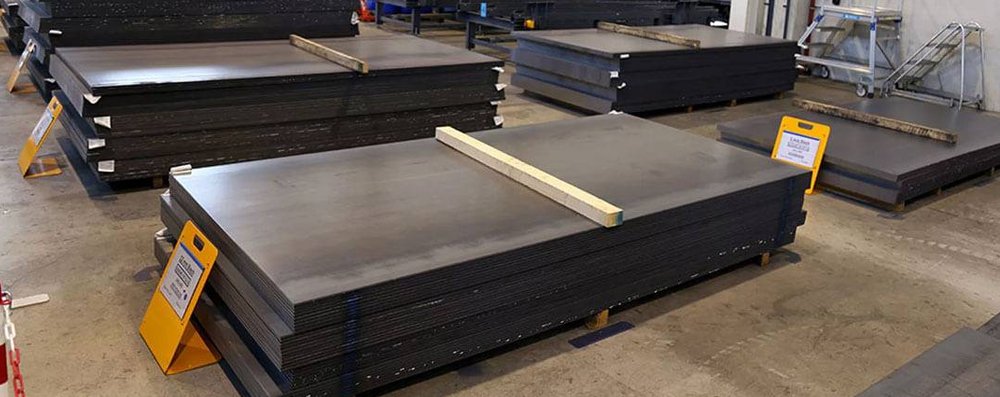Introduction
EN19 steel plate, also known by standards such as 709M40, AISI 4140, or 42CrMo4, is a high-quality alloy steel celebrated for its outstanding tensile strength, toughness, and good wear resistance. It is a chromium-molybdenum alloy steel used extensively in industries where high tensile strength and good fatigue strength are critical. Due to its ability to be heat-treated, EN19 can achieve a wide range of mechanical properties, making it highly versatile for automotive, oil & gas, and mechanical engineering applications. The material combines robustness with excellent machinability and moderate weldability when proper procedures are followed, providing a practical and economical solution for demanding engineering challenges.
Properties of EN19 Grade:
- High tensile and yield strength after heat treatment
- Excellent toughness and fatigue resistance
- Good wear resistance for parts subject to friction
- Can be heat-treated to achieve customized mechanical properties
- Moderate weldability requiring pre and post-weld heat treatment
- Suitable for surface treatments like nitriding for added surface hardness
Uses / Applications of EN19 Grade:
- Transmission gears and gear shafts
- Automotive crankshafts, axles, and drive shafts
- Heavy-duty studs, bolts, and fasteners
- Oilfield tools, drilling machinery components
- High-stress spindles and machinery parts
- Couplings, toothed wheels, and connecting rods
- Hydraulic parts and high-load mechanical linkages
Mechanical Properties:
| Condition Hardness (HB) | Tensile Strength (MPa) | Yield Strength (MPa) | Elongation (%) | Hardness (HB) |
| Annealed | 700 – 850 | 495 | 15 | 201 – 225 |
| Normalized | 775 – 925 | 555 | 13 | 223 – 277 |
| Quenched & Tempered | 850 – 1000 | 680 | 13 | 248 – 302 |
Chemical Composition (% by Weight):
| Element | Content (%) |
| Carbon (C) | 0.35-0.45 |
| Manganese (Mn) | 0.50 -0.80 |
| Silicon (Si) | 0.10 -0.35 |
| Chromium (Cr) | 0.90 – 1.50 |
| Molybdenum (Mo) | 0.20-0.40 |
| Sulfur (S) | ≤ 0.05 |
| Phosphorus (P) | ≤ 0.05 |
Physical Properties:
| Property | Value |
| Density | 7.85 g/cm³ |
| Modulus of Elasticity | 190 – 210 GPa |
| Shear Modulus | ~80 GPa |
| Bulk Modulus | ~140 GPa |
| Poisson’s Ratio | 0.27 – 0.30 |
Forging:
EN19 plates should be uniformly heated to 850°C to 1200°C for forging. Post-forging, parts should be cooled slowly in a furnace or buried in dry lime or ashes to prevent thermal stresses and cracking. Air cooling is generally not recommended for large forgings.
Heat Treatment:
- Annealing: Heat to 680°C – 700°C, hold and furnace cool to refine grain structure.
- Normalizing: Heat to 850°C – 880°C, air cooling improves mechanical uniformity.
- Hardening: Heat to 860°C – 890°C followed by oil quenching.
- Tempering: Post-hardening, temper between 540°C – 680°C depending on the required hardness and toughness.
- Stress Relieving: After heavy machining or welding, stress relief is advisable at 550°C – 650°C.
Dimensional Tolerances:
Manufactured in accordance with EN 10029 standards:
- Thickness tolerance: ± as specified by class A, B, C, or D
- Width and Length: Within specified customer tolerances
- Flatness: Controlled based on EN 10029 flatness Class N (Normal) or Class S (Special)
Machinability:
EN19 has good machinability in the annealed and normalized condition. Post-hardening, machining becomes more challenging and requires carbide tools and lower cutting speeds. It is recommended to use suitable lubricants and coolants to prolong tool life and maintain surface finish.
Corrosion Resistance:
EN19 is not corrosion resistant in its natural form. It requires surface treatments like painting, galvanizing, or coating if intended for use in corrosive environments. For critical environments, EN19 components can also be surface hardened and nitride to improve longevity.
Weldability:
- Welding of EN19 requires preheating to 150°C – 300°C depending on thickness.
- Post-weld heat treatment or stress-relief annealing is recommended to restore mechanical properties and relieve residual stresses.
- TIG, MIG, or stick welding methods can be used with appropriate filler materials.
Available Form:
- Hot Rolled Plates
- Cold Drawn Sheets
- Round Bars
- Square and Flat Bars
- Forged Blocks
- Custom Cut-to-Length Plates
Conclusion:
EN19 alloy steel plate is a highly versatile material ideal for applications requiring high strength, good toughness, and excellent wear resistance. Its balanced combination of properties, availability in various forms, and ability to undergo numerous heat treatments make it a favorite choice in industries such as automotive, oil and gas, and heavy engineering. However, for outdoor use or corrosive environments, appropriate surface protection is necessary. Proper welding practices also ensure reliable service life when joining EN19 components.


